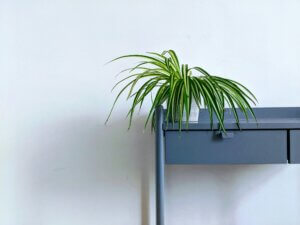How to Keep Your Bathroom Humidity in Check

One of the most common concerns in older bathrooms with outdated ventilation or worn-out fixtures is excess moisture. If you’re dealing with high humidity problems in the bathroom, you might notice mold growth, peeling paint, foul smells, and possible damage to flooring or walls.
If left unchecked, the problem can worsen. In extreme cases, excess moisture can also affect the structural integrity of your home.
To keep your home safe and sound, prevent mold, reduce musty odors, and protect your investment, consider ways to reduce humidity in your bathroom. In this in-depth guide, you’ll learn about the 4 leading causes of high humidity in most bathrooms and 5 effective ways to reduce it. You’ll also uncover preventative measures to take now. Let’s begin!
Causes of High Humidity in Bathrooms
Factors like the steam from your showers, poor ventilation, and plumbing issues can contribute to high humidity levels in your bathroom. Before jumping into the solutions, learn about why humid air occurs in the first place.
Steam from Showers and Baths
Warm showers and baths are relaxing, but they also create steam that can condense on surfaces. The hotter and longer your shower routine, the more steam you generate. As such, the bathroom ends up with a lot of lingering moisture.
The first step to limiting moisture and preventing further complications is shower steam control. You can take simple moves, such as shortening bath times or slightly lowering the water temperature and having a cooler shower. Usually, these strategies help reduce the amount of steam.
Poor Ventilation
Many homes that were built more than a decade ago have bathrooms without proper ventilation. If your space doesn’t have an extractor fan, or has one that isn’t functioning well, you might end up with excess bathroom humidity.
Eventually, the moisture stays trapped in the air. Over time, the excess moisture can create a damp environment for mold and mildew to grow on walls and in corners. A functioning extractor fan helps bring in fresh and remove warm air from indoors.
Leaks and Plumbing Issues
A slow leak may not be immediately identifiable, but it can steadily introduce moisture into your bathroom if not dealt with promptly. Often, worn-out pipes, leaky faucets, and loose connections all contribute to excess dampness and humidity.
The good news is that you can fix these leaks early and prevent bigger problems such as structural decay, water damage, and mold.
Damp Materials and Surfaces
Some common materials, like porous caulking and old tile grout, may absorb water and stay damp for longer. Even older wood frames or drywall behind the walls can become saturated and remain that way for weeks.
If these materials stay moist, ongoing humidity problems can arise, as well as mold and mildew growth. Keep surfaces in top-notch condition by resealing the grout line and replacing worn caulk. This helps reduce the chance that moisture settles into crevices and cracks.
Effective Methods to Reduce Bathroom Humidity
Bathroom humidity can turn into costly damage, so dealing with the problem before it becomes serious is crucial. Check out these 5 effective methods to reduce bathroom humidity fuss-free.
Fix Leaks
As soon as you notice leaks, get them repaired to prevent mold in bathroom spaces. Look for leaks around your sink pipes, tub fixtures, and the toilet base, and check for condensation or slow drips.
Common indicators of a hidden leak are a discolored area on the ceiling or wall and an unpleasant smell. Trust an expert to fix bathroom leaks or replace faulty connections quickly, and you’ll prevent more expensive damage over time.
Pro tips for addressing leaks:
- Perform a regular inspection of all visible pipes and connections.
- Replace worn-out washers or seals in faucets.
- Double-check the toilet’s water supply line.
- Contact an expert if you suspect hidden plumbing issues.
Exhaust Fans
A bathroom needs adequate air circulation. This is where a well-functioning exhaust fan steps in. More modern fans work efficiently and quietly, and they do a better job at drawing out moist air than older models.
Search for options with built-in humidity sensors that turn on automatically. Once the exhaust fan is installed, you can run it during showers and baths and leave it on for about 15 minutes afterwards to clear out steam.
Improve Ventilation
Boosting overall circulation goes beyond using an exhaust fan. If you have a window, open it slightly when taking showers or keep the door of the bathroom partially open to let steam escape. If your bathroom doesn’t have a window, consider adding one.
Utilize Dehumidifiers
A dehumidifier for bathroom use can capture extra moisture in the air, and it is useful for older homes or damper environments where an exhaust fan isn’t enough. Select a unit that is sized appropriately for the bathroom’s square footage and empty its reservoir or connect a drain hose as needed. To keep the dehumidifier working correctly, perform routine filter cleaning.
Incorporate Moisture-Absorbing Plants
You can also consider adding a bathroom plant to your space, such as peace lilies and bird’s nest ferns. Orchids and Chinese evergreens are also suitable options for absorbing moisture.
These plants thrive in humid conditions, and they may help absorb a bit of excess moisture. While plants like the Bird’s Nest fern and Snake plant won’t solve severe humidity issues on their own, they can be a helpful addition to your moisture-control strategy.

Preventive Measures and Maintenance
A major part of proper bathroom maintenance is keeping all surfaces clean and dry. Typically, soap scum, hair, shampoo, and other residues hold onto moisture and encourage mold and mildew growth. To tackle this, make sure to perform an easy cleaning routine after your showers. Wipe down mirrors, walls, and the shower stall or bathtub.
You can also use special products that are mold-resistant or all-natural solutions, like diluted vinegar. Keep your space dry and clean, and you’ll prevent mold in your bathroom.
Proper Towel and Bath Mat Drying Practices
Another thing you need to know when discussing how to reduce humidity in your bathroom is that bathmats and damp towels can stay wet for hours. They can increase humidity levels, which is especially true in poorly ventilated bathrooms.
Hang towels on hooks or bars in a properly ventilated space and wash them frequently. If you can, dry them in another room or outside when it’s sunny. A helpful tip is to choose bath mats and towels made from fast-drying materials like polyester.
Routine Inspection for Mold and Mildew
Mildew and mold spots can happen even in the most carefully maintained bathroom, especially around faucets and windows. Include periodic checks in your cleaning routine.
If you see black or green patches or detect unusual odors coming from your bathroom, act fast and use a mold-specific cleanser or a diluted bleach solution. Minor mold patches are fairly easy to remove, but if you see widespread growth, it might be time to call a water remediation specialist.
Bathroom Renovation
Small fixes can work, but sometimes, they only go so far. Failing grout, outdated ventilation systems, and worn out fixtures contribute to ongoing humidity challenges. A bathroom renovation can help you solve these problems at the source.
Consider remodeling to replace old materials with more modern and moisture-resistant options. You can also think about upgrading the ventilation system to create a drier and healthier environment.
Maybe you have the necessary skills to perform a minor project on your own. However, for a more comprehensive overhaul, it is best to reach out to specialized experts at Pacific Bath.
Our KOHLER-certified installation specialists and dedicated consultants are ready to help you at affordable prices. We use the best American-engineered products, and with a lifetime warranty, you can rest assured that your property is protected.
Better airflow and moisture control are guaranteed. Enjoy all of the benefits of a renovated bathroom, such as enhanced comfort and increased home value. If you need an upgrade, we are also the top KOHLER shower installation provider in Washington, Nevada, and Oregon. KOHLER Walk-in Baths are designed for older adults and homes where safety is a top priority.

Conclusion
Some moisture in your bathroom is normal, but excessive amounts can cause trouble if left unchecked. A warm and damp environment can cause mold and mildew growth, as well as costly structural damage.
Focus on effective strategies like improving ventilation, fixing leaks, and placing plants in your bathroom like the Bird’s nest fern. Also, consider adding a dehumidifier to create a better environment for your loved ones.
Frequently Asked Questions
What’s a good humidity level for a bathroom?
Normally, air humidity levels in a bathroom should range between 30 to 60%. Use a dehumidifier or exhaust fan to keep levels within this range.
Does humidity in a bathroom cause mold?
Yes, too much humid air in a bathroom can foster mold and mildew growth. The most common signs of mold and mildew growth include musty odors, damaged walls, and discoloration.
Why is the humidity so high in my bathroom?
The main reasons for high humidity in your space include steam from hot showers and baths, poor ventilation (or lack of ventilation), and hidden leaks. Damp materials like old grout can also trap unwanted moisture.
How do I reduce humidity in my bathroom?
You can install an exhaust fan, open a window (or the door slightly when taking showers), fix leaks right away, and add a dehumidifier. We also recommend wiping down wet surfaces after showers and keeping bathmats and towels dry.
What plants absorb moisture in the bathroom?
A Spider plant, Snake plant, peace lilies, a Bird’s Nest fern, Monstera, Pothos, and orchids are suitable plants for bathrooms with higher humidity. Plants can help absorb excess moisture, but be sure to also consider other ventilation methods to thoroughly deal with your humidity issues.


